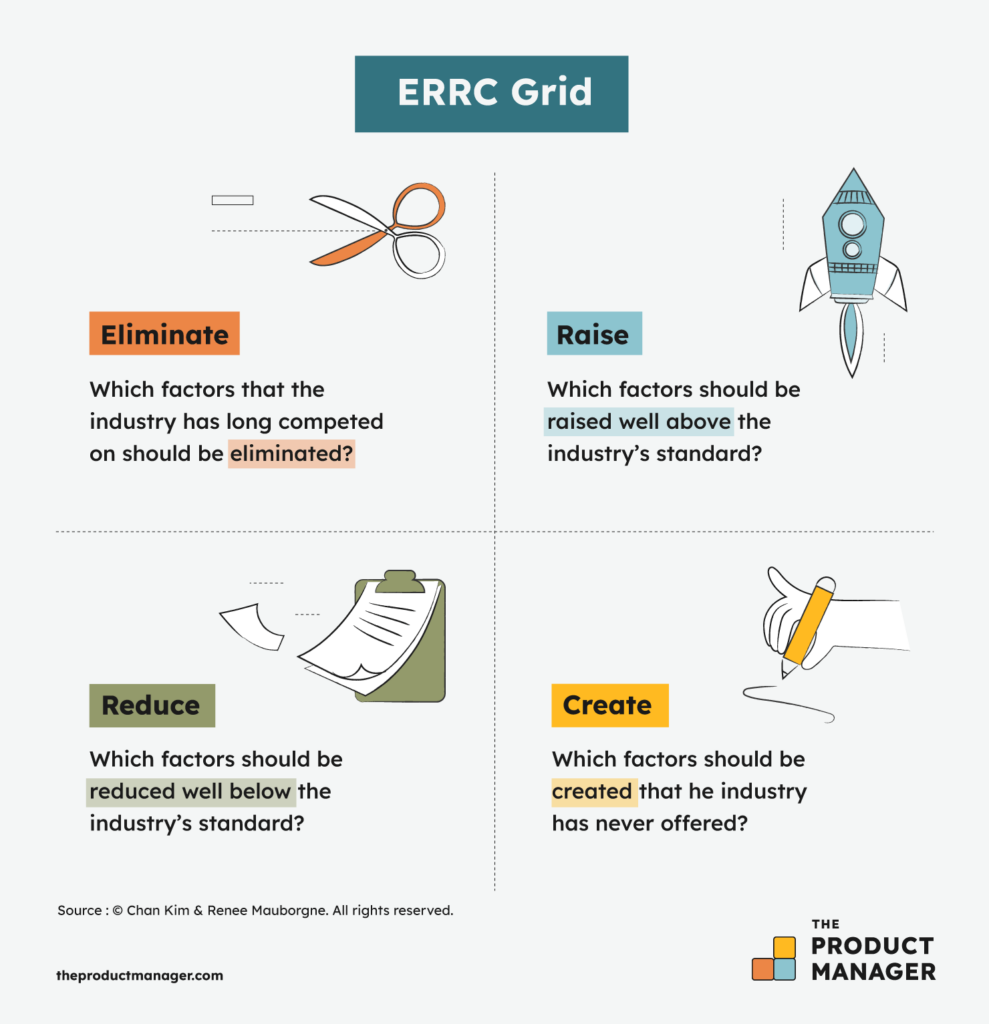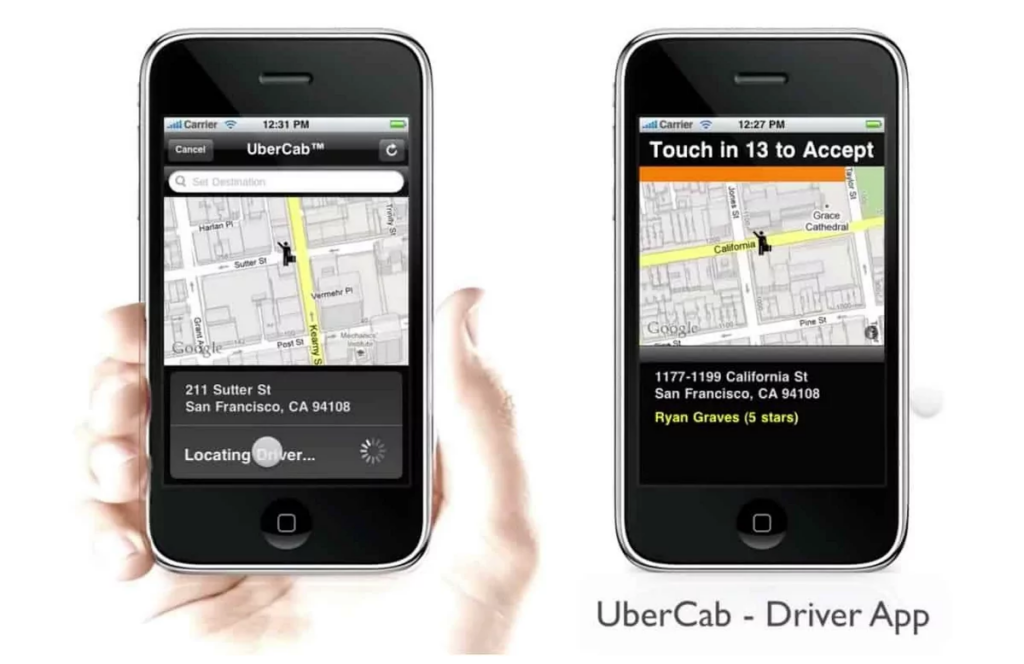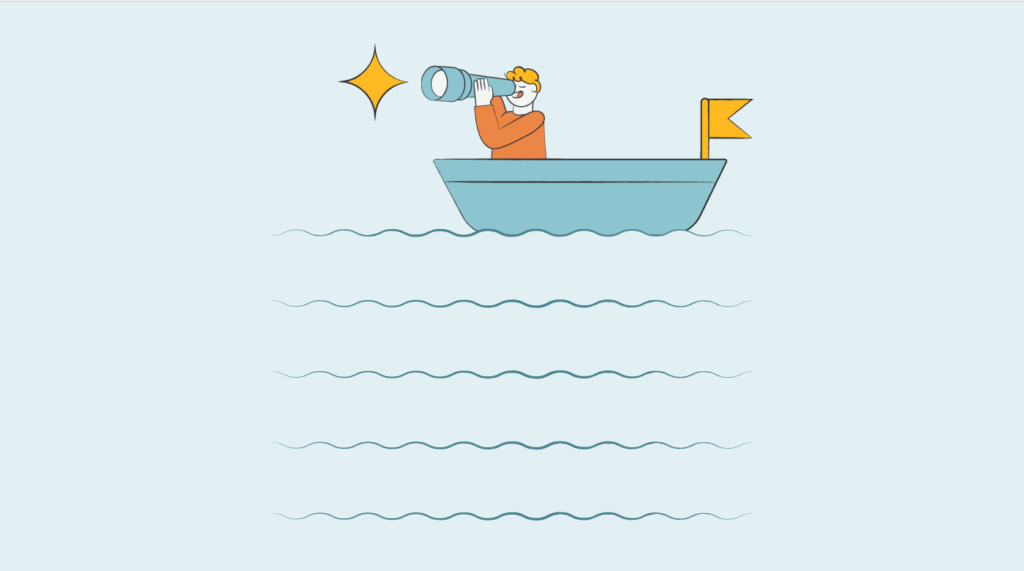Whenever we start ideating on a new product idea, one of the first questions that we answer is “How’s the competition in the market?”
Believe it or not, it's pretty common for us to realize that the market is pretty empty.
Does it mean that whatever we build will succeed in that market? Of course not! Entering an empty market (a.k.a. the "blue" ocean) is just as hard as surviving in a competitive one (the "red" ocean).
So, today I want to help you design a sound blue ocean strategy that will help you make your product vision come true.
What Is the Blue Ocean Strategy About?
When using this term, we're usually referring to the practice of entering a market with little to no competition. It was coined by W. Chan Kim & Renee Mauborgne in their bestselling book, “Blue Ocean Strategy,” in which they divided markets into two groups:
- Red Oceans that are full of competitors. Entry into these markets would inevitably entail war room-style strategizing. In this market universe, everyone is engaged in the simultaneous pursuit of product differentiation and acquiring non-customers. Here, you can get profitable growth by winning a greater share of the known market space.
- Blue Oceans are new market spaces that are either void of competitors or have a few small ones that do not dominate the market. Here, you can create new demand and increase market boundaries.
Sometimes, a blue ocean means that there is no market at all, and you are the first one to create it, making direct competition irrelevant. A good example of creating an uncontested market space was consumer-grade tablets and Apple’s introduction of the iPad.
Yes, they were companies manufacturing tablet computers at that moment. However, the mass consumer market was practically non-existent. So, Apple did not simply introduce a new product; they also created the consumer tablet market along with it.
What’s The Difference Between Blue Ocean And Red Ocean Strategies?
The main difference between these two types of business strategies is the way you grow your product.
Growth Using a Red Ocean Strategy
There are plenty of competitors out there. Naturally, your main driver for growth would be to outcompete them. The most well-known ways of achieving this are the following:
- Offering your product at a more affordable price than the others.
- Vendor-locking your customers (I’m looking at you, Atlassian).
- Covering the existing pains better than your competitors do.
- Covering many “side pains” along with the main pains (unlike your competitors).
A great example of the latter are all-in-one solutions. For instance, if you operate in the project management solutions market, apart from giving your users an easy-to-use Trello-like board with tasks, you could also consider adding wiki pages, OKRs, performance tracking, and other features.
This way, people using the basic task management solutions of your competitors (and paying extra for other tools to cover the mentioned side pains) will quickly leave your competitor and buy your tool instead.
While you can call the cutthroat competition a downside of this strategy, it also has a significant benefit. Your competitors have already validated the product idea and done most of the market research and customer development for you.
You don’t really have to figure out if a certain feature will work or not. If a competitor has it and you see plenty of positive feedback on it in G2 or Capterra, then the feature will definitely be a success.
Growing Using a Blue Ocean Strategy
As you have already guessed, the situation in the blue ocean is the exact opposite of the red one. You don’t have to worry as much about the competition, and that’s a significant benefit.
However, you will be facing the massive challenges of validating your product idea and persuading your customers that your product is able to solve their problems.
It could be that there's a good reason why your product idea hasn't already taken off—and that's a risk you take with this strategy.
So, instead of focusing on out-competing others, your strategic thinking needs to be about figuring out the pains of your users, finding a solution for them, and trying to educate the market to use your product.
This is where you take advantage of the classical startup tools and frameworks, such as Lean Startup, MVPs, Customer Development, and others.
Apart from these generic frameworks, however, there is also one that is optimized for the particular case of tackling blue ocean markets—ERRC.
How To Create Your Blue Ocean With The ERRC Framework
The acronym ERRC stands for Eliminate-Reduce-Raise-Create. It is a framework that the authors of The Blue Ocean Strategy developed specifically for working with empty markets.
Based on this framework, there are four strategies and activities that you should keep your focus on:
Eliminate: You start by looking at how people are solving their problems in the blue ocean with alternative tools or processes. Then, you find the elements that are inefficient or painful and eliminate them from your product offering.
For instance, Airbnb understood that there was a major financial scam problem in the process of renting homes off Craigslist. So, they offered a secure payment system in their platform to eliminate that risk.
Reduce: Here, you start identifying the factors (which are prevalent in alternative solutions) that are adding little to no value to the users.
A good example of this is the European low-cost airlines. They understood that very few people use the business and first-class seats in an airplane and completely removed them from their airplanes.
Raise: Along with removing useless factors, you should also focus on improving the factors that do matter to users.
For low-cost airlines, it was, of course, the price of the ticket. People would absolutely be ok with cramped seats, lack of in-flight food service (which is disgusting anyway), and other amenities as long as they could maintain the most important factor—the lowest possible ticket fare.
Create: Finally, there are cases when you need to create something from scratch because it does not exist in the industry.
Salesforce, for instance, introduced the concept of SaaS into the CRM world. Before that, almost all of the CRM and sales solutions required a massive upfront payment and had to be installed on local machines.

ERRC is a fantastic tool for tackling the blue ocean. However, you cannot build successful products relying on it alone. So, let’s look at other tools and frameworks that can help you build your product based on your ERRC strategy.
Handy Tools For Your Blue Ocean Strategy
To be honest, the tools I will be talking about would help you navigate the red ocean, too. However, considering the high level of uncertainty in the blue ocean, they are practically must-haves in your arsenal if you want to take that path and stretch the boundaries of the industry.
Here are the most crucial tools to master as you set sail into the blue ocean:
MVPs
I don’t think I need to explain an MVP to you, but let me explain why it's so important for your blue ocean strategy.
While the major risk in the red ocean is competition, the risk in the blue ocean is developing something that fails to solve users' pains and thereby convince them to ditch their alternative solutions.
At the beginning stages of your product development, you will have basically zero idea of what your users want and how they will end up interacting with your solution. You will also be very likely to change the way your product works at least a couple of times before you make something likable to your users.
So, to shorten the length of your iterations and save money and resources on making big things that people don’t like, you're better off making small things that people don’t like and then improving on them.
MVPs are highly popular in the blue ocean space.
Example: Uber's Blue Ocean MVP
Uber, for instance, started with a small basic app that would book luxury rides for businessmen.

They knew that they wanted everyone to use their app. However, they started small to test their main hypothesis ("Will people book rides online?") in a cost-effective way.
Extensive User Testing
As mentioned earlier, the blue ocean strategy assumes that you have little to no idea of what your users want. To tackle this challenge, you will need to talk to your users extensively and run a wide variety of tests on them.
This will include:
- User Interviews can help you understand the environments where users experience pain, how they use alternative solutions, and their workflows.
- Usability Testing to get early feedback on your product solutions and identify the journey spots where your users struggle.
- Beta Testing to get a working product into the hands of your users and see how it performs in the wild.
User testing, just like MVPs, is responsible for some of the most successful product entries into the blue ocean market.
Example: How User Testing Helped Amazon’s Echo Float in the Blue Ocean

Along with classical interviews and surveys, Amazon used a clever alpha-testing strategy. They handed out Echo prototypes to their employees and asked them to use the device at home and give feedback.
They also asked some of the alpha testers to let Amazon researchers visit their homes and personally observe the way they interacted with the device while cooking, watching TV, hosting parties, and other real-life environments.
Design Thinking
Products that successfully enter the blue ocean are usually disruptive in nature. This means that the solutions they offer are completely different from the alternatives that exist in that market.
Building these products requires you to think outside of the box, forget about existing solutions, and design a product from scratch. This is where the design thinking mindset comes in handy.
Unlike the rest, design thinking is more of a mindset than a framework or process.
You can say that you have achieved design thinking if you:
- Have strong user empathy and are able to put on their shoes when designing solutions.
- Keep your mind clear of distractions such as the beliefs of industry players. Instead of improving upon them, you change the rules of the game and innovate.
- You iterate and learn from your mistakes.
Although not an entry to the blue ocean, Apple’s iPhone is my favorite example of design thinking in action. They wanted a phone that was a true pleasure for people to use. So, everything from technology to industrial design and UX was focused on it.
They were one of the pioneers of the capacitive touchscreen technology (when you don’t have to press hard on the screen for it to detect a touch).

They used this technology because they understood that the old tech (resistive touch screen) was highly annoying for people to interact with and not user-friendly at all.
Lean Startup Methodology
We could argue that the Lean Startup methodology is the natural next step of the design thinking philosophy. It is a structured approach to developing innovative products in an unknown market space that relies on build-measure-learn cycles, rapid prototyping, and perseverance.
One of the great benefits of the lean methodology is its ability to integrate with both design thinking and agile development—creating an end-to-end product development strategy for the blue ocean.
Success Stories Of Famous Companies Who Conquered The Blue Ocean
Operating in the blue ocean is not easy, but it is definitely possible—and there are many billion-dollar companies that have survived to tell the tale.
Spotify With Music Streaming
Spotify practically created the music streaming industry by giving a clever solution to both of its user groups—music labels and consumers.
For music labels, piracy and the inability to enter the low-income markets was a massive pain. With music streaming, there was no real motivation for people from developing countries to pirate songs as they could legally buy the subscription at a price that matched the income level in their country. So, the value-cost tradeoff was not a problem for them.
For consumers, it was the extra convenience of accessing millions of songs without having to pay for each one of them separately.
GitHub With Collaborative Cloud Repositories
GIT has been the go-to version control system for developers for quite a long time. However, the tradeoff of using GIT was the cumbersome and annoying process of maintaining the central code repository.
Instead of trying to fix GIT (which, in my opinion, is perfect and shouldn't be "fixed"), the folks at GitHub decided to look at the big picture and offer something out of the box—a cloud repository.
Now, you no longer have to create and maintain your own repository, you can simply let GitHub handle that for you. Moreover, it comes with a wide variety of management and collaboration tools (e.g. pull requests and code reviews) that let companies properly organize the code merging and decision-making process.

It was especially handy for the companies that had developers and offices scattered all around the world, as any of their employees could instantly access the code base with a simple browser login.
Slack With Social Media-Inspired Messaging
Do you remember the era of business email chains that were 100 messages long? It was terrible!
The folks at Slack hated this, too. So, when building their game (yes, they were originally a game studio), they decided to also build a more modern and easy-to-use internal communication tool.
Their game dev venture eventually failed. But they soon realized that the tool they had built was so good that they could simply start selling it. Just like any other blue ocean startup, they employed out-of-the-box thinking, gathered feedback from internal and external users, and built something that was fundamentally different from email (and 10x better).
Inspired by the way social media platforms work, they introduced channels where you would publish posts and people would discuss the topic in the form of comments under that post.

The new way of communicating with colleagues was much faster, more convenient, and easier to manage. So, their blue ocean shift went beyond disruption, making channel-based communication tools the go-to choice for most businesses.
Be The Next Industry Disruptor
You need lots of courage and a strong vision to be able to disrupt an industry and create a new product category. But to turn a vision into a successful product, you will also need to have a dialled-in blue ocean strategy.
And if you decide to embark on a journey across the blue ocean, I hope the tools discussed here will prove to be helpful in your quest.
Don't forget to subscribe to our newsletter for more product management resources and guides, plus the latest podcasts, interviews, and other insights from industry leaders and experts.




